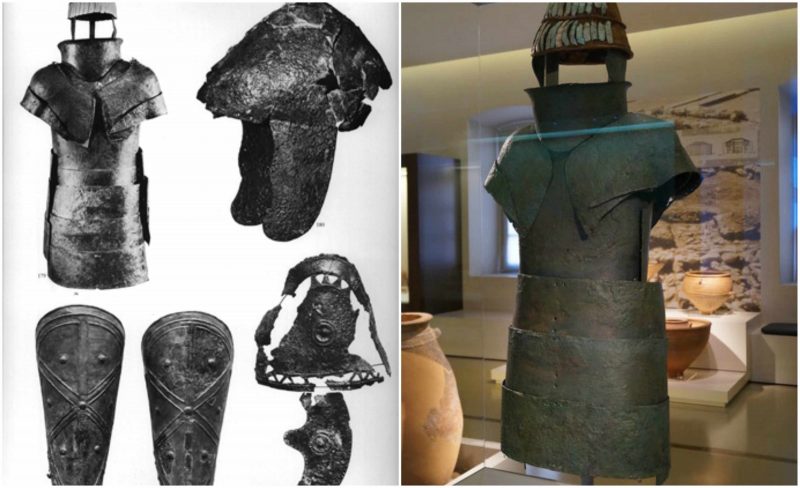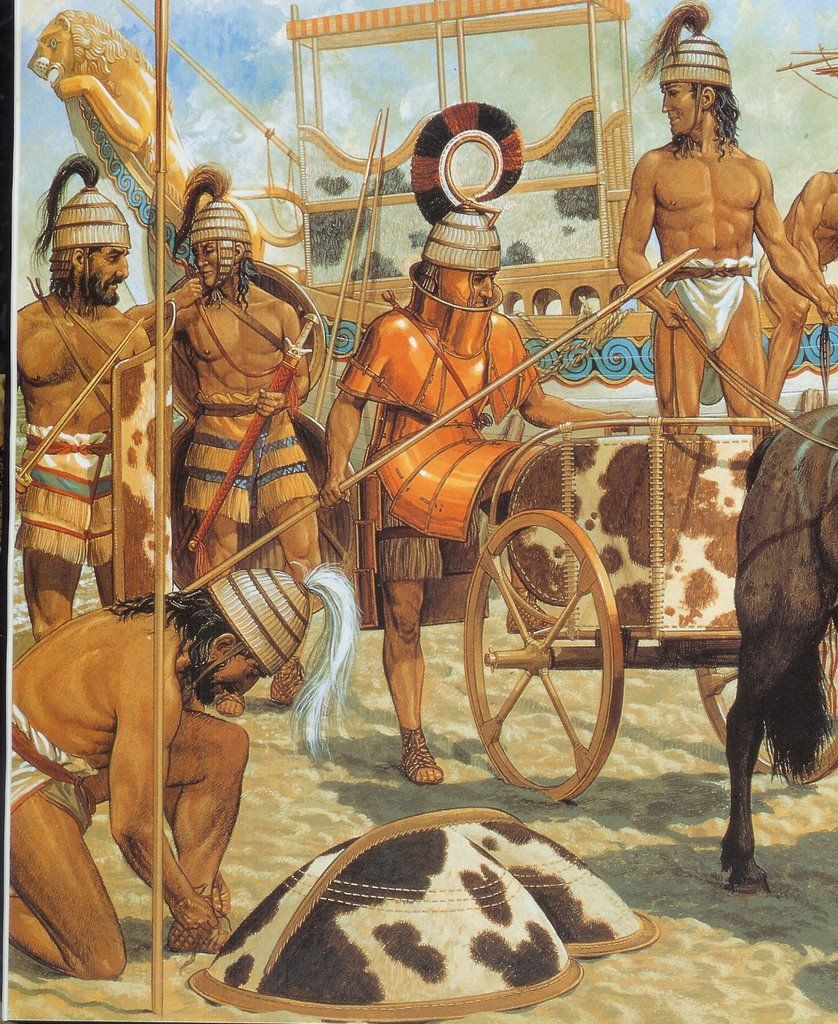

Some scholars tried to rationalize its use as armor worn by a chariot-mounted warrior. My first impression on seeing the panoply was that it resembled remnants of a robot from "Lost in Space." I couldn't visualize a Mycenaean warrior staggering around the battlefield in that armor! Although it is dated to about 100 years before the Trojan War, can you imagine Achilles fighting in it?Īpparently, my reaction has been shared by other scholars as well. Other bronze fragments were also found that may have been the remains of a second greave and forearm guard although classicist Diane Fortenberry argued that single greaves were used to indicate rank in Mycenaean Greece. The panoply also included two shoulder guards, two pieces of bronze to protect the the upper arms, a single greave and forearm guard. A throat guard protected the wearer's neck and two triangular pieces were attached to the front of the breast plate to further protect the chest. The panoply, when restored, was found to include a back and breast plate and six bronze plates, three in front and three behind along the bottom edge of the cuirass. But in addition to the squashed armor, archaeologists were able to recover pottery fragments, a silver toggle pin (probably used to fasten an item of clothing), a bronze oinochoe (jug), as well as various other objects of bronze, including at least one knife and a dagger, a bronze mirror, a gold-plated ring, fragments of a silver cup, fragments of boar's tusk and a pair of swords inlaid with gold and ivory. The panoply was found in tomb 12 of the Dendra necropolis and had been partially plundered at some point.

It forms part of the Late Helladic Dendra Panoply, which consists of fifteen separate pieces of bronze sheet, held together with leather thongs, that encased the wearer from neck to knees. So he certainly wasn’t an exceptionally large man, even by ancient standards.Ĭurrently the Dendra Panoply is on display at the Archaeological Museum of Nafplio.In May 1960 Swedish archaeologists discovered the earliest example of a beaten bronze cuirass at Dendra, dated to the end of the fifteenth century BCE (Late Helladic IIIA - about 1400 BCE).

Based on the skeletal remains found in the tomb, it is estimated that the warrior who owned the armor was 1.75m (5′8′’) tall and weighed around 65kg (140lbs). One could imagine an elite corps of heavily armored Greek soldiers bashing through enemy lines like tanks. Thus some contend that the armor could have been used by heavy infantry as well. However, although the armor looks heavy and bulky, it only weighs 15kg (33lbs), and modern high quality replicas have demonstrated that the armor is mobile and dexterous enough for foot combat. The armor certainly would not have been used by the average rank and file grunt, but most likely would have belong to a very wealthy noble or elite warrior. The most commonly accepted theory is that this type of armor would have only been used by charioteers who were not required to conduct combat on foot.

Dating to around 1500 BC, the panoply consists of 15 bronze plates held together with leather straps, a set of greaves, a set of arm guards, and a helmet mounted with boar tusks.
Dendra panoply full#
Discovered by Swedish archaeologists in 1960 near Dendra in the Argolis region of Greece, the Dendra Panoply is an impressive full body set of bronze armor uncovered from a Mycenaean Era tomb.


 0 kommentar(er)
0 kommentar(er)
